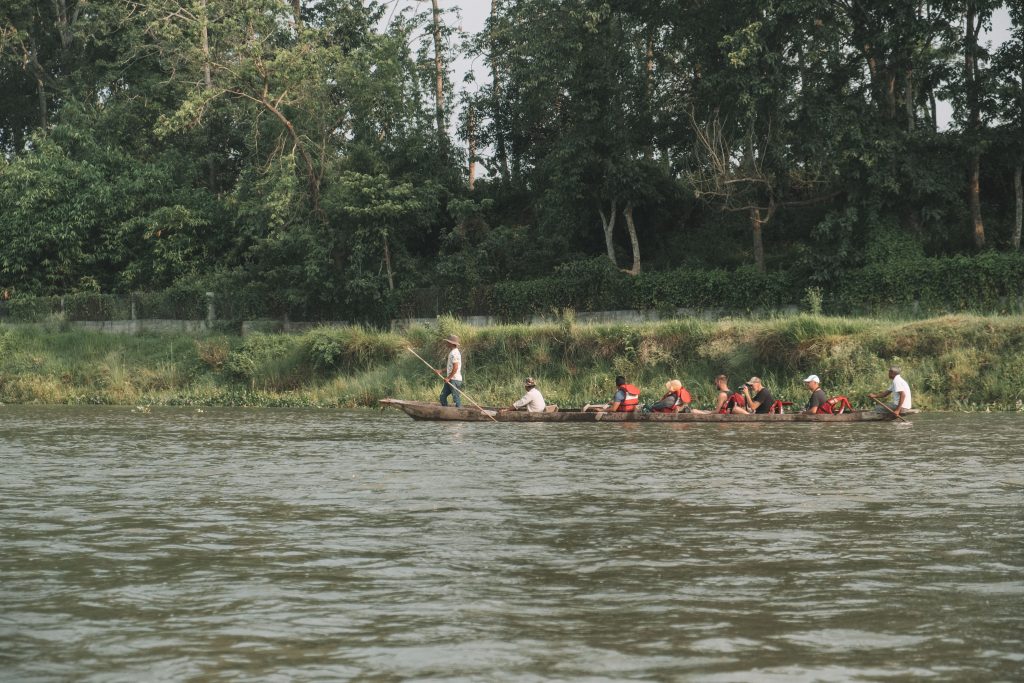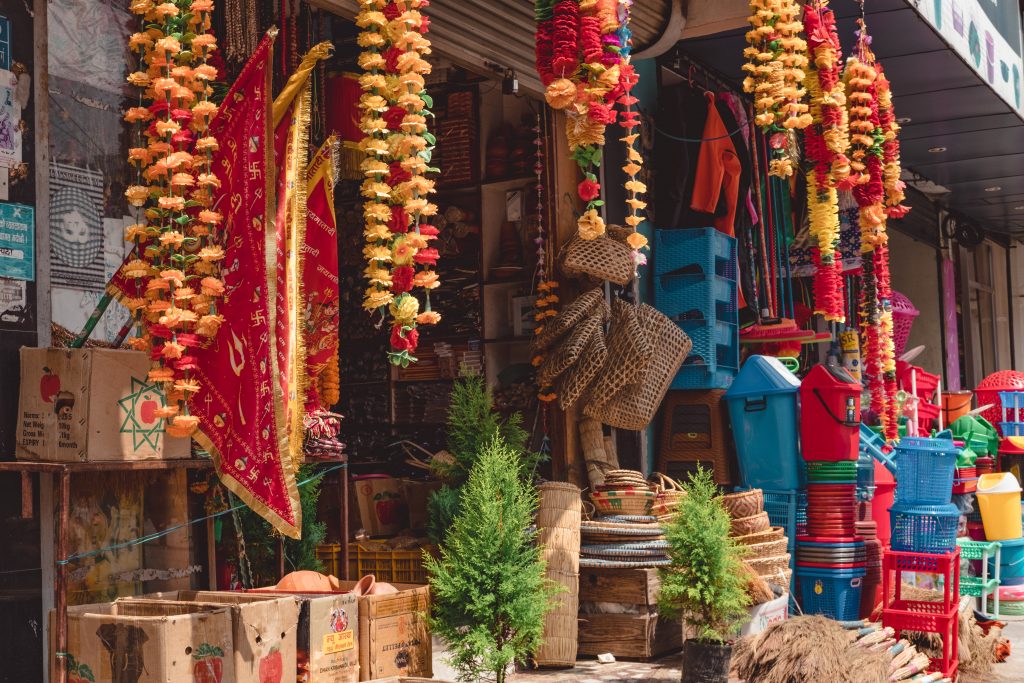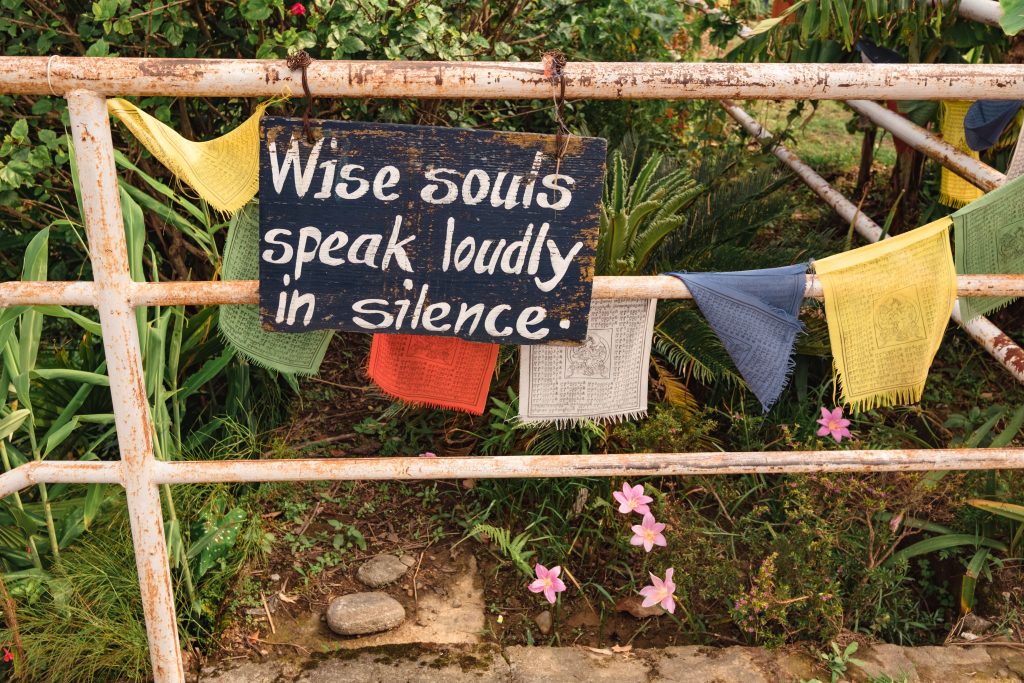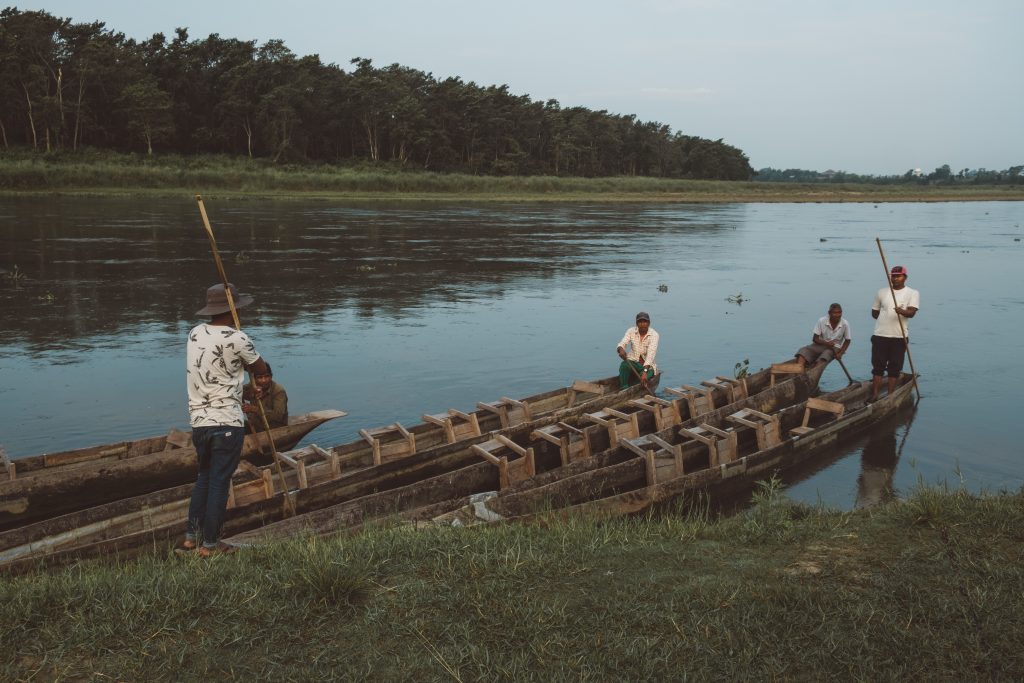Wondering what are the best places to see in Kathmandu? Nepal’s capital city couldn’t be set in a more dramatic landscape. Kathmandu lies in a vast valley surrounded by the exalted, snow-capped Himalayas and their lush foothills. Kathmandu, the gateway to the Himalayas, is also known as the “City of Temples,” and the Kathmandu Valley is home to seven UNESCO World Heritage Sites, which are just some of the many historical places to visit in Kathmandu.
The city of Kathmandu seamlessly blends the past with the present. Within the confines of Nepal’s largest city, you will find one of the city’s, as well as the country’s, most visited World Heritage Sites, Kathmandu Durbar Square, which houses a cornucopia of sacred Hindu and Buddhist temples and shrines. However, it is just one of three UNESCO World Heritage Site Durbar Squares in the Kathmandu Valley, the other two being at Bhaktapur and Patan. For a more modern look at Kathmandu, head to Thamel, the city’s trendiest centre for nightlife. Thamel is teeming with boisterous bars, eclectic eateries, upscale shops and luxury, as well as budget, hotels.
This ancient, diverse city has enough to keep you busy for days. Kathmandu is also a place where Buddhism and Hinduism coexist, whether it be people, shrines, temples or architecture. It is the cultural capital of Nepal, with something to entice every visitor.
Table of Contents
National Museum of Nepal
What better way to learn about the history and culture of Nepal, and begin your visit, than by seeing the country’s national museum, which is conveniently located in its capital, Kathmandu? The National Museum of Nepal is not only one of the most popular places to visit in Kathmandu, but the country’s largest museum. The museum, which is nearly 100 years old, showcases historical artwork, artefacts and weapons, such as statues, paintings, murals, coins and firearms used in battles fought on Nepali soil. It even has a gallery solely dedicated to Buddhist art, which contains paintings and sculptures as well as ritualistic objects. The National Museum of Nepal also has a natural history section that features different species of animals, butterflies, plants and more.
Narayanhiti Palace Museum
If you’re wondering what to see in Kathmandu that illustrates its royal past, Narayanhiti Palace Museum, once the Narayanhiti Royal Palace, the residence of the Nepalese monarchy in Kathmandu, is the place to see. It became world-famous in 2001 when nine members of the royal family were killed in a mass shooting during a party. The dead included King Birendra of Nepal and Queen Aishwarya. Bullet holes are still visible on some of the walls. Today, the Narayanhiti Palace Museum features the throne and banquet halls, the royal bedrooms and stuffed tiger and rhino heads. Cameras and bags are not allowed inside the palace museum, but it still offers a great glimpse of royal life.
Kathmandu Durbar Square
This is one of Nepal’s most visited UNESCO World Heritage Sites, as it is quite accessible from Kathmandu’s tourist hub and is where history comes alive. Here you will find venerated Hindu and Buddhist temples and shrines, as well as a former royal palace (durbar means palace), idols, statues, fountains, pagodas, courtyards and more. Kathmandu Durbar Square is one of three Durbar Squares in the Kathmandu Valley, and all of them are UNESCO World Heritage Sites that were once important sites for Buddhist and Hindu rituals, ceremonies and coronations.
Bhaktapur Durbar Square
Another must-see Durbar Square in the Kathmandu Valley trio is located in Bhaktapur, less than 10 miles from the capital city. Bhaktapur Durbar Square contains the former palace of the Bhaktapur Kingdom, the Palace of 55 Windows, Vatsala Temple, the statue of King Bhupatindra Malla, Nyatapola Temple, which is one of Nepal’s most stunning pagodas, the Golden Gate, one of the most beautiful of its kind in the world, Lion’s Gate and a number of other sacred temples. Bhaktapur Durbar Square is the perfect place to experience the culture, tradition and religion of Nepal, as it has changed little since the 17th century.
Patan Durbar Square
Patan Durbar Square is located in Lalitpur, Nepal’s third-largest city and the oldest of all the three cities of the Kathmandu Valley. Here you will find another ancient royal palace, one that was inhabited by Nepal’s Malla Kings of yore. Patan Durbar Square is a perfect example of architecture of the Newar, the historical residents of the Kathmandu Valley, and is overflowing with temples and idols, as well as Newari residential homes. Patan Durbar Square contains more than 135 courtyards and 55 temples. It is sacred as both a Buddhist and Hindu site.
Boudha Stupa
The Boudha Stupa is the most iconic structure in the Kathmandu area. Because it dominates the valley’s skyline, the Boudha Stupa can’t be missed. This UNESCO World Heritage Site is one of the biggest stupas on Earth. According to the Ancient History Encyclopedia, a stupa is considered to be the most important type of monument of Buddhism and has a distinctive semi-spherical shape. The Boudha Stupa was built in the 5th century and is a major pilgrimage site. It has been attracting devout Buddhists and visitors alike for centuries.
Pashupatinath Temple
Pashupatinath is the oldest Hindu temple in Kathmandu. It was built in the 5th century along the banks of the Bagmati River, which is considered holy by Hindus. Pashupatinath Temple is also one of the four most important religious sites in Asia for devotees of Shiva and one of the seven UNESCO World Heritage Sites of the Kathmandu Valley. It is considered a masterpiece of Hindu architecture and is a collection of temples, ashrams and more, as well as being an important pilgrimage for Hindus and one of the most sacred places to visit in Kathmandu. .
Swayambhunath
Do you love monkeys? If so, Swayambhunath, aka Monkey Temple, which is commonly referred to as “the second most important shrine in the Kathmandu Valley,” will be No. 1 on your itinerary. The temple gets its name from the troop of monkeys that call it home. This 5th-century Buddhist complex, which is another UNESCO World Heritage Site, features a supreme stupa, temples and numerous shrines, making it an ideal spiritual getaway, once you climb the 365 steps required to get there.
Garden of Dreams
Kathmandu’s Garden of Dreams is the perfect respite after tackling the nation’s capital. This peaceful garden is an oasis amidst the hustle and bustle of Kathmandu. It is a neoclassical piece of paradise, created on the grounds of a former palatial estate. The Garden of Dreams features fountains, meticulously manicured landscapes, pavilions and ponds. Here you will also find bushes, plants, trees and flowers from all over the world. The aptly named Garden of Dreams is ideal for meditation or just spending a relaxing day contemplating what to see in Kathmandu.
Thamel District
Kathmandu’s centre for nightlife and tourism, Thamel, has become the place to be in the capital city, whether for bar-hopping, dining out, shopping or listening to live music. In fact, exploring the Thamel District, which is best done on foot, is one of the most popular things to do in Kathmandu. Thamel is brimming with boutique shops, stores for traditional Nepalese clothing and handicrafts, shops for trekking gear, restaurants representing local and international cuisine, hip bars and clubs and deluxe hotels. It is also home to the aforementioned Garden of Dreams. Cosmopolitan Thamel is the city’s designated tourist quarter, so visitors are more than welcome.
Shivapuri Nagarjun National Park
Trekking through Shivapuri Nagarjun National Park is the perfect remedy for too much nightlife and overindulgence in Thamel. Fortunately, the peaceful park is conveniently located near the capital city on the northside of the Kathmandu Valley. Shivapuri Nagarjun National Park is one of Nepal’s most popular national parks for a day hike, mountain-biking excursion, rock climbing, wildlife watching or a relatively easy climb up Mount Shivapuri. It is also a birdwatcher’s dream, due to the fact that Shivapuri Nagarjun National Park has 318 species of birds, such as the golden-throated barbet and Eurasian eagle-owl. The park has scenic views of many Himalayan peaks, is overflowing with waterfalls, filled with lush green forests and has miles of well-established hiking trails. If you happen to be in the park on the right day and at the right time, you might even spot an elusive snow leopard, Himalayan black bear, golden jackal, barking deer, Indian crested porcupine or Himalayan pika. A sacred site, Shivapuri Nagarjun National Park also features a number of Hindu and Buddhist shrines.
Langtang National Park
Langtang is Nepal’s first Himalayan national park and is situated at over 21,150 feet. Langtang National Park is also connected to the Qomolangma National Nature Preserve in neighbouring Tibet and part of the Sacred Himalayan Landscape. Due to its southern border’s close proximity to the Kathmandu Valley, Langtang National Park is easily accessible. Do you love hiking? If so, this is the Nepali national park for you, as it is famous for the Langtang trek, a 10-day journey through the alluring Langtang Valley, which is beloved for its cedar forests, flora and fauna, sacred Gosainkunda Lake and astonishing views of Himalayan peaks, which is why Langtang is widely considered one of the world’s most beautiful valleys. Langtang is another national park of Nepal whose climatic zones range from subtropical to alpine. Here you might also see a Himalayan black bear, langur monkey, snow leopard or red panda. The Trisuli and Sun Koshi rivers also run through Langtang National Park.
Asan Tole
Do you love old-fashioned street markets? Then one of the liveliest places to visit in Kathmandu is the Asan Tole. From vegetables and spices to fish and a cornucopia of traditional Nepalese food, and just about anything else that’s edible, hawkers at Asan Tole will be selling it from sunrise to sunset. At Asan Tole, perhaps the most bustling square in all of sprawling Kathmandu, you can also buy jewellery, books, electronics and so much more. Visitors also flock to Asan Tole to marvel at its old-school architecture. In ancient times, the Asan market sat at the crossroads of trade routes through the Himalayas. Today, Asan Tole, located in the central part of the city near Thamel, is still a nerve centre of Newari culture, the historical inhabitants of the Kathmandu Valley.
Mount Everest by Plane
Most people will never have the opportunity, or skill, to climb Mount Everest. However, that doesn’t mean you can’t see the summit of the world’s tallest peak. Leave the mountain-climbing gear on the ground and board an Everest mountain flight, which allows you to fly close to and view the Earth’s most famous mountain, a mere 20 miles away, from the comfort and safety of a fuselage. This once-in-a-lifetime experience also enables you to fly over other heaven-reaching Himalayan peaks, glaciers and lakes, which helps you better understand the geography of Nepal. Everest flights take off from Kathmandu, and the best time to view the peaks is from September to April, according to Buddha Air, which offers Everest flights that last up to an hour.
Nagarkot
If wondering what to see in Kathmandu after exhausting all options, why not take a day trip to a nearby village in the Kathmandu Valley that has world-renowned Himalayan views? That village is Nagarkot, from which you can even see Mount Everest. Located less than 20 miles from Kathmandu, Nagarkot is widely regarded as the most scenic spot in the area and has commanding views of the Kathmandu Valley. It is also very popular with nature lovers and hikers, as Nagarkot has a plethora of nature walks and trails, including the well-trodden Nagarkot Panoramic Hiking Trail and Nagarkot Nature Trail. Nagarkot, a former strategic fort and summer retreat for the royal family of Nepal, has a number of quality hotels that line its ridge, so you can turn your day trip into an overnight excursion. Witnessing the amazing spectacle of the sunrise over the Himalayas is the perfect end to your trip to Kathmandu.









Leave a Reply